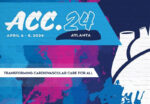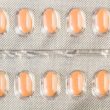Heart failure is characterized by increased left atrial filling pressure and venous congestion which intensify with exercise and volume burden, and makes conventional medical management hard. In this context, interatrial shunting might offer a self-regulating mechanism, as shown by the Ventura IAS study. The aim of this study was to assess the safety and efficacy...
Lithotripsy in the “Real World”: REPLICA EPIC-18 Study
Severe persistent calcification of the coronary arteries has been associated with different factors, such as advanced age, hypertension, dyslipidemia, smoking, and kidney failure, among others, and continues to be one of the challenges to stent implantation because of it impact on device advancing, drug release and adequate positioning. Intravascular lithotripsy (IVL) is a technique that...
Transcatheter Myotomy for the Treatment of the Dynamic Obstruction of the Left Ventricular Outflow Tract
Septal reduction therapies are used to mitigate the symptoms caused by dynamic left ventricular outflow tract (LVOT) obstruction and the associated mitral regurgitation (MR) that can surge in hypertrophic cardiomyopathy (HCM). Alternative therapies to treat LVOT obstruction include surgical procedures, i.e. surgical myotomy or myomectomy, or alcohol and radiofrequency septal ablation (intracardiac, transthoracic and endocardial,...
Edge-to-Edge Repair in Cardiogenic Shock
The edge-to-edge approach with MitraClip has been established as a valid strategy for patients who experience severe symptomatic mitral regurgitation (MI) with high risk for surgery, currently with a IIa indication. MI complicated by cardiogenic shock, which results in a high risk for conventional valve surgery, is a particularly complex scenario. In such a case,...
Use of Apixaban and Post TAVR Valve Thrombosis
TAVR can be associated to early valve thrombosis, characterized by thrombi formation near or attached to the prosthetic valve, with or without valve dysfunction. This dysfunction is associated with increased leaf thickening and reduced leaflet motion, as well as reduced orifice area or increased transvalvular gradient. Triggered multislice CT allows dynamic valve assessment and thrombosis...
MYVAL, a TAVR Balloon-Expandable Valve with Promising Results
TAVR has been shown beneficial over time, and with the development of new generation of prosthetic valves and implantation techniques, outcomes have been improved, reducing the incidence of leaks y and the need for definite pacemaker. This study looked at the evolution of 100 patients with symptomatic aortic stenosis treated with Myval THV from Meril...
CAPTIS, a Novel Cerebral Embolic Protection System in TAVR
The incidence of stroke after TAVR ranges between 2 and 5%, depending on the series, which has been associated with higher morbimortality, affecting patient quality of life and their psycho-social environment. Many cerebral embolic protection systems have been developed in response, and even though they have been shown beneficial in many studies, their role in...
TCT 2023 | The WATCH-TAVR Study
In the TVT registry, around 40% of the patients eligible for transcatheter aortic valve replacement (TAVR) had atrial fibrillation, and there were high levels of adverse events after starting anticoagulant treatment, especially with oral anticoagulants (VKAs), primarily due to bleeding. The purpose of this study was to assess the feasibility, safety, and efficacy of combined...
Cause of Cardiac Death after TAVR at Present
Cardiac failure (CF) and sudden cardiac death (SCD) stand out as two of the main causes of death in patients with aortic stenosis. Although transcatheter aortic valve intervention has shown higher survival, these two continue to be the main conditions leading to patient death at followup. In its early days, TAVR also showed benefits, but...
TAVI-in-TAVI with Balloon-Expandable Valves
TAVI (Transcatheter Aortic Valve Implantation) has proven to be beneficial and is currently performed in increasingly younger and lower-risk patients. However, as with surgical bioprostheses, structural deterioration, whether due to stenosis or regurgitation, is one of the challenges we must address. While currently uncommon, this is an issue we will probably see more and more...









